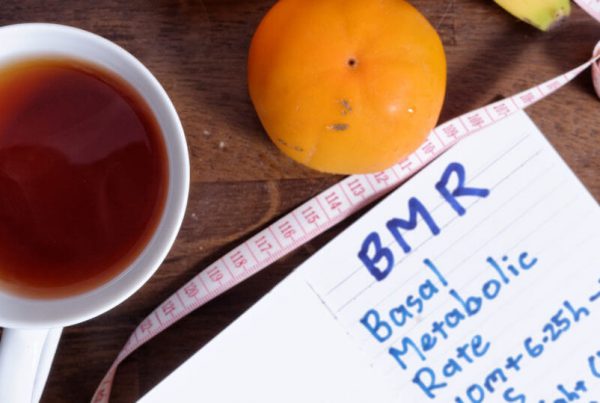Editor’s Note: This post was updated on July 31, 2018, for accuracy and comprehensiveness. It was originally published on November 13, 2015.
“I used to be fit, but then I stopped exercising and it all turned to fat.”
Sound familiar?
It doesn’t seem like it should make sense – that muscle can turn into fat – but everyone’s seen the retired professional athlete who got really fat.
Well, here it is in black and white (and in bold): No. Muscle does not “turn into fat.” Period.
There is no process in the human body by which muscle – which is made up of mainly protein, amino acids, and water – transforms itself into adipose (fat). The human body, no matter how amazing it can be at times, cannot magically turn one tissue into another.
So then, what’s going on?
It’s Not Magic – It’s Body Composition
The illusion of “muscle turning into fat” becomes believable for many people when they don’t see their weight change over time, yet see themselves get fatter. While muscle turning into fat is a myth, the possibility of your body fat percentage rising over time definitely isn’t, and that’s what’s actually happening.
So what’s actually happening? It is simply a negative change in body composition.
Specifically, it’s a loss of Skeletal Muscle Mass combined with a gain of Fat Mass occurring at about the same rate, at about the same time. How does this happen, and how can you avoid this? Let’s take a closer look.
Here’s what a 7-pound decrease in muscle and a 7-pound increase in fat would look like in someone who weighed 261.9 pounds with a body fat percentage of 13.0%:

Results completed on the InBody 570.
Notice how as Lean Body Mass drops, Skeletal Muscle Mass drops with it. Because the Lean Body Mass decrease matches the Fat Mass increase, this person’s weight doesn’t change.
However, this person’s body fat percentage increased from 13.0 to 15.7. The increased body fat percentage combined with the lack of body weight change creates the illusion that muscle is transforming into fat, when in reality it’s just an increase in body fat disguised by no change in scale weight due to muscle loss.
How do things like this happen, and why does it seem to happen to people who are or used to be very fit? It starts with muscle loss.
Muscle Loss
Although you may not realize it, you “lose muscle” every minute you are alive. That’s because your muscles, like any other tissue in your body, depends on cell turnover and protein synthesis. This means that your body is continually breaking down the protein in your muscles and rebuilding them. You want your body to do this – it’s part of what’s keeping you alive!
Skeletal muscle can be grown and developed through proper nutrition – which includes consuming sufficient protein to provide the necessary amino acids – and through physical activity. The converse is also true: if you become less physically active and/or your diet can no longer support the development of increased muscle tissue, you will enter a catabolic (tissue-reducing) state known as muscle atrophy.
Muscles that are partially used – using less than 20% of their maximum force – will start to atrophy over the long term. Complete disuse is even worse: muscles that are completely unused, such as when someone is bedridden and performs very little movement, can degrade by about 1/8 of their strength per week.
Of course, if you don’t have any major health complications, your muscles are not going to degrade at such a significant rate as someone who is bedridden. However, if your body was used to operating at a high, athletic level and you suddenly stop exercising, your body won’t see any reason to maintain your muscles at that level and will begin to atrophy.
And what takes its place instead? Fat!
Same Diet, Different Lifestyle
But where does the fat come from?
The same place it always comes from: an energy surplus – caused by eating more than you’re burning. Although for many people this isn’t exactly news, it can catch people by surprise, especially people who are used to being athletic and fit.
Athletes require massive amounts of energy in order to perform at a high level. And this energy demand requires large amounts of all major macronutrients. In order to get that energy, they need to eat – and eat a lot. According to an interview given by Susan M. Kliner, a nutritional consultant for the Seattle Seahawks, NFL quarterbacks required somewhere between 4,000 to 6000 calories, spread out over about 6 meals per day in order to be in ideal playing shape.
A major reason why high-performance athletes like NFL quarterbacks require so many calories is that they typically have higher-than-average amounts of Lean Body Mass as compared to average people at the same height. That’s significant because as Lean Body Mass increases, Basal Metabolic Rate (BMR) increases. BMR is the number of calories a body needs at rest, not including what is needed for movement and digesting food.
Here’s an example of someone whose body composition falls into the athletic profile:
The Lean Body Mass, SMM, and Basal Metabolic Rate was measured using the InBody 570.
Notice the high values for Lean Body Mass and Skeletal Muscle Mass. This contributes towards the BMR value of 2,602.
However, BMR is not the total calories you need a day. A more appropriate number is the Total Daily Energy Expenditure (TDEE), of which BMR is one part. In order to calculate TDEE, you’ll first need to determine BMR and then multiply it by a factor determined by how active you are.
Professional football players would fall under “extremely active” as their full-time job involves very high amounts of physical activity. Taking the BMR in our example and multiplying it by 1.9 would result in a TDEE of 4,943.8, consistent with the statements made by Dr. Kliner.
Extremely Active: 2602 (BMR) x 1.9 (Activity level) = 4,943.8 (TDEE)
What’s important to remember is that this number is the amount of calories that this individual needs to consume maintain his weight due to his Lean Body Mass, and critically, at his current activity level.
What would happen if this person stopped being so active and took an office job – jobs that are typically sedentary? TDEE would plummet quickly because the activity level would drop significantly.
Let’s say that this individual decided to continue being active while working at this office job and worked out enough to be classified as “moderately active.” Assuming that BMR remains consistent, this person’s TDEE would be 4,033.1. That’s a difference of 910.7 calories, or eating approximately 22 strips of pan-fried thick cut bacon on top of what you usually eat.
Extremely Active: 2,602 (BMR) x 1.9 = 4,943.8 (TDEE)
Moderately Active: 2,602 (BMR) x 1.55 (Activity level) = 4,033.1 (TDEE)
Caloric Surplus: 4,943.8 (Old TDEE) – 4,033.1 (New TDEE) = 910.7 calories
In the example above, if this person continued to eat at the same level they did when they were extremely active, they would be in a caloric surplus of 910.7 a day, or an extra 6,374.9 calories a week.
What happens when the body remains in a caloric surplus for an extended period of time? Fat gain!
So tying it all together, it isn’t that your “muscle turns into fat.” From a body composition standpoint, here is what is happening:
- Your Lean Body Mass is decreasing due to a skeletal muscle mass loss
- Your Skeletal Muscle Mass is decreasing because of disuse. Your BMR decreases accordingly.
- Because activity level has dropped, your TDEE has also dropped.
- Energy intake remains consistent, not accounting for TDEE drop. Caloric surplus created.
- Caloric surplus leads to Fat Mass gain.
Now that we know what is happening, how do we make sure it doesn’t happen to us?
Who’s At Risk and What They Can Do
People who are at risk for gaining large amounts of fat are, somewhat ironically, people who are at their fittest right now. That’s because when you’re at your fittest, the amount of nutrients you are consuming is necessary fuel to help the body recover after a tough workout. You’re in balance.
The problem is, people become accustomed to eating a certain amount of food, especially when they have lived a certain way for many years. They develop a mental understanding of how much they can eat, and they often order and/or cook portion sizes that match this mental understanding of how much food they need.
Although it is a challenge, here are three steps you can get back on track.
1. Test your Body Composition
Testing your body composition regularly is the best way to ensure that you’re staying at the level you want to be.
By tracking your body composition, you will be able to track Lean Mass and Fat Mass gain or loss. With that kind of information, you’ll be able to make the changes you need to ensure that you stay as fit and healthy.
2. Change your Diet
You must adjust your diet to match your current activity level, or you will risk running a caloric surplus. That change might be more than you’d expect, too.
A great way to optimize your diet is to use BMR which will make sure you are getting enough nutrients to fuel muscle growth, but also lose that stubborn belly fat.
3. Find an activity that fits your new lifestyle
Find new ways to increase your activity level that works with your current lifestyle. Although you may no longer be performing at high levels every day, you can find new ways to be active on a schedule that works for you.
Two days of strength training a week has both great physical and mental benefits.
Remember the key is to maintain the balance between food consumption and exercise intensity that fits your current lifestyle. Once you achieve that balance, you lose the extra fat start getting your old athletic body back.





